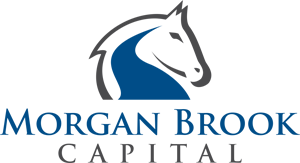When undertaking private equity due diligence, one of the key steps is company valuation, which allows potential investors to get a better sense of the net worth of a private company.
Public companies are rather straightforward with their financials, so valuation often involves simply looking at the stock price and number of outstanding shares. Unfortunately, the valuation process for private companies is not as easy since they do not have publicly listed stock values. Furthermore, private companies do not have the same stringent accounting and reporting requirements as public companies. As a result, financial statements can be inconsistent and unstandardized, which can make them difficult to read and interpret.
The private equity industry has developed several approaches to valuing private companies based on estimates and assumptions. While these models can help potential investors get a sense of company value, they need to be balanced with information about acquisitions, mergers, initial public offerings, and industry shifts. The models also do not plan for extenuating financial circumstances.
Still, the models are very useful. The following are three of the most commonly used.
Comparable Company Analysis
The comparable company analysis (CCA) approach assumes that companies in the same industry that are similar have analogous financials. If financial information for the target company is not publicly available, private equity firms will look for similar companies and use that organization’s financials in its calculations. This is the most commonly used method when it comes to valuing private companies.
When considering comparable companies, factors like size, industry, and operations are considered. Generally, potential investors will create a pool of peer companies, collecting their financial information to make an average.
Financial information to consider often varies by industry as well as the growth stage of the company under investigation. A common approach to evaluation uses the EBITDA multiple. This approach takes net income (adjusted for interest, depreciation, amortization, and taxes), and uses that as an approximation of free cash flow. The EBITDA multiple is a ratio of enterprise value to the free cash flow, typically projected out for 12 months. This figure can be adjusted for the size and projected growth of the target company to make it as realistic as possible.
Discounted Cash Flow
The discounted cash flow (DCF) approach is a bit more complex than the CCA strategy. Like CCA, DCF starts with an estimation of discounted cash flows for the target company based on information from comparable organizations. Then, the average growth rate is calculated using the pool of comparable companies. This growth rate can be used to project revenue, taxes, operating expenses, and more. Typically, potential investors will generate free cash flow models for five years using a specific formula. With this strategy, they get a better sense of the likely growth trajectory for the company.
The company’s discount rate is often its weighted average cost of capital (WACC). To calculate WACC, private equity firms figure out the cost of equity, cost of debt, capital structure, and tax rate. This complex procedure involves using the capital asset pricing model to calculate the target company’s cost of equity. Next, the company’s beta is determined by using the average beta for the industry. The cost of debt depends on the company’s credit profile, which influences the interest rate for debt. Tax rate and capital structure are generally taken from peer companies. Once they determine the WACC, investors use it and free cash flow to calculate DCF.
Since the DCF method involves a great deal of financial modeling, it can often give a better valuation of a company, but it involves a lot of estimation and calculations.
First Chicago Method
The First Chicago Method of estimating private company value is a combination of the CCA and DCF approaches. What distinguishes this method from others is the fact that it considers various scenarios in the valuation. This helps provide a fuller range of the possible outcomes and likely payoffs.
Potential investors generally construct three scenarios based on the business plan created by the firm. These scenarios—best-case, base-case, and worse-case—are each assigned a probability.
Usually, cash flows and growth rates are projected over five years based on each of the three scenarios. Firms will often project the terminal value of the target company using a strategy like the Gordon Growth Model. The valuation of each case is calculated using the DCF method. While there is value in the three projected cases and their probabilities, the final valuation using this method is an average of all three scenarios that is weighted according to the probability of each. Since this approach incorporates both the upside potential and the downside risk, it has become very popular among private equity investors.

